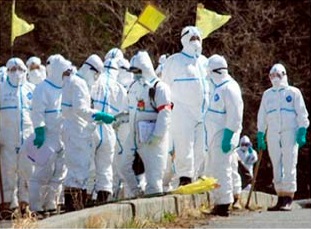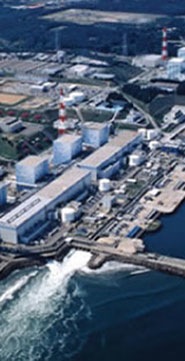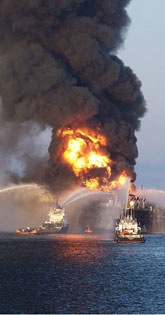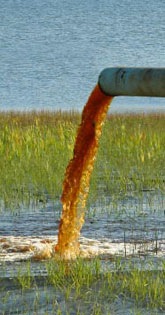

 As the crisis in Japan relinquishes above-the-fold real estate in U.S. papers,
As the crisis in Japan relinquishes above-the-fold real estate in U.S. papers,
it steadily devastates more and more actual real estate on Japan's east coast. The race to reassure a nervous public is thwarted by renewed attention to deficits in plant security, economic models built on best-case scenarios, and a growing concensus that the crisis is far from over.
The full extent of the Fukushima disaster isn't yet known. The most common long-term illness caused by radiation, thyroid cancer, spikes ten years after exposure. But new cases are still reported after 40 years. Radionucleotides have entered the food chain on land and in the ocean. The Fukushima event is nothing short of catastrophic.
I've got my eye on... the no entry zone on the 20-kilometer radius around the Fukushima Daiichi plant. Logistically, that will be something to watch. They have to move people out and prevent former residents from making unscheduled trips.
The unknowables: Barring unforeseen events (which is one heck of a caveat, given that Fukushima is a collection of unforeseen events), TEPCO will continue pumping massive amounts of irradiated water from Unit 2 and working to restore cooling systems - a goal that is still months off, if it can be achieved at all. The greatest concern I hear is the very real possibility of another aftershock causing further damage Worst-case scenario: a containment vessel breach
The Nuclear Regulatory Commission’s risk assessment assumes certain things can’t happen. And if they did, they could only happen in a certain sequence and only for a certain period of time. None of that is true in Japan. The standard wisdom from the nuclear industry was that if there were an accident, all you needed to do was shelter in place for a couple of days, and the radiation would be gone. But in Japan, the people who sheltered in place had no police coverage, no emergency services, no medication, no food. In all of the NRC’s scenarios, an accident could only occur at one plant. So their plans call for using the companion plant to augment the nonfunctioning systems in the troubled plant.
Surprise of the week: The NRC does not require nuclear plant operators to make retrofit repairs if they are expensive. Revealed in a federal appellate court brief, the 2003 rule made voluntary recommendations to strengthen a plant’s survival capabilities following a terrorist attack. More recently, when the NRC made the rules mandatory, 62 plant operators asked for – and received – exemptions. This precedent could mean that lessons learned from Japan may also be effectively voluntary and, therefore, ignored.









